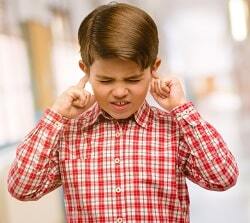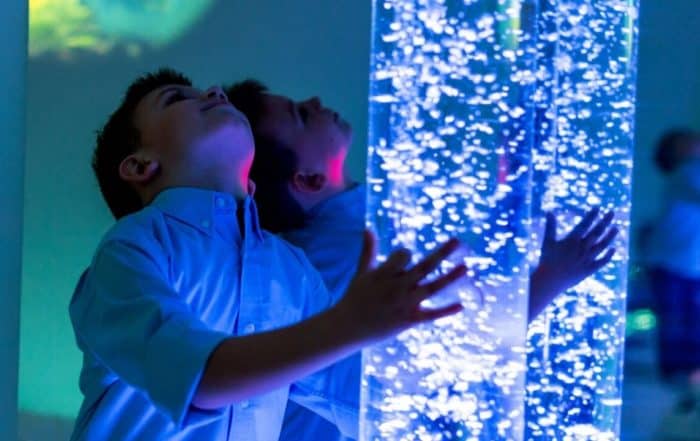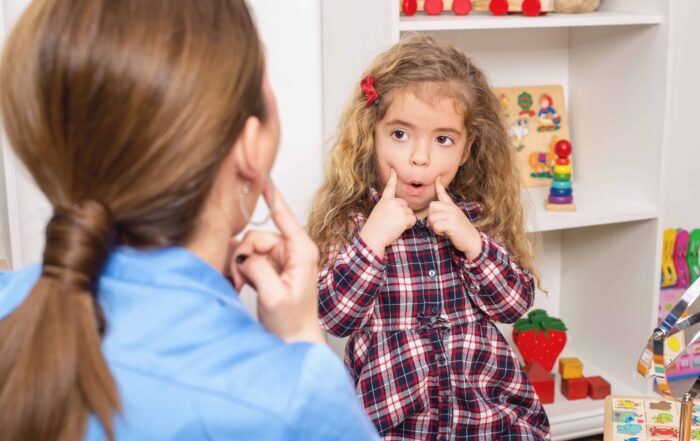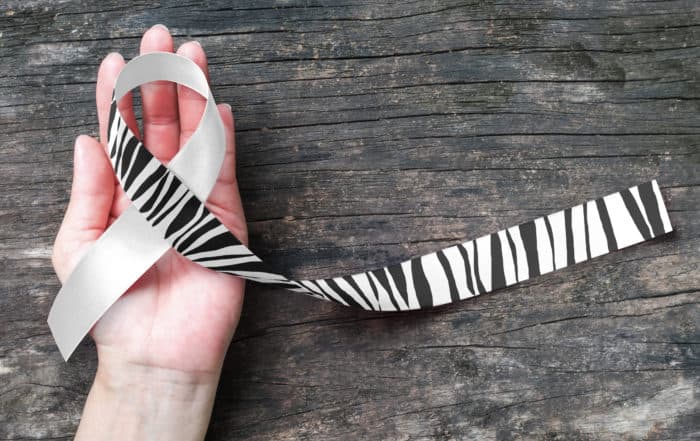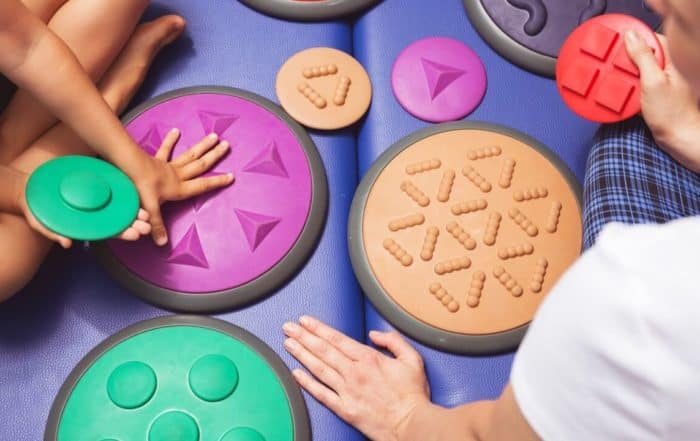Moira Peña, BScOT, MOT, OT, Reg. (Ont.), answers questions about sensory strategies for home. This recorded live question and answer session was a follow-up to our two-part series on brain and sensory processing differences and sensory strategies for home.
Handouts for this webinar are online HERE
Learn more about our speaker, Moira Peña, BScOT, MOT, OT, Reg. (Ont.), HERE
Take the knowledge quiz for this webinar HERE
Please note: This previously recorded Q & A session is not intended to diagnose or treat any medical conditions and should not replace a personal consultation, as appropriate, with a qualified healthcare professional.
In this webinar:
1:38 – Sensory processing in autism
3:15 – Explaining sensory differences to family members
8:00 – Sensory diets and self-regulation
11:06 – Sensory schedules and ARFID
14:10 – No age limit for sensory tools
18:25 – Vocalization stereotype
24:15 – Aggression, SIB and context
26:06 – Environmental contexts
30:00 – Vocal stimming is enjoyable
38:50 – Behavioral changes, time, and data
41:58 – Visual stimming advice and options for sensory diets
48:00 – Neurodiversity acceptance in Latin America
51:30 – Weighted blankets
53:25 – Masking behaviors across a lifetime
56:55 – Difficult conversations with friends
1:00:13 – Sensory kits
1:01:44 – Psychomotor practices and non-pharmacological interventions
1:06:25 – Breaking down context
1:13:17 – What causes sensory issues in autism
1:15:00 – Adult diagnosis
Peña discusses the frequency of sensory processing differences in individuals with autism (1:38). She emphasizes the need to ask autistic people about their lived experiences to understand how we can assist them best (2:00) and provides ideas for explaining sensory processing differences to family members (3:15). Peña reminds listeners that sensory strategies are not about “fixing a person” (33:57) and underscores the importance of creating safe, non-stressful sensory environments that are conducive to an individual’s needs (8:00).
The speaker details how personalized sensory diets can remediate interconnected symptoms and provides sensory support suggestions for Avoidant Resistant Food Intake Disorder (ARFID) (11:06). Peña notes that there is no age limit for sensory tools as they are modes of self-regulation and often help individuals complete daily activities (14:10). She discusses vocalization stereotypy and stresses that controlling a behavior is not the goal (18:25). The presenter urges listeners to move away from the idea of “high and low functioning” and to focus instead on what an individual’s needs are (25:00). Throughout the Q&A, she re-emphasizes the necessity of understanding individuals within their current sensory environments and identifying triggers and solutions for disruptive behaviors (31:00).
Peña notes the value of speech-language pathologists and other specialists in diagnosis and treatment planning (27:40). She encourages viewers to be curious about treatments and sensory strategies (29:00), noting that we need to “embrace individual differences and expect complexity” (30:24). Peña encourages active data collection and assessment when making decisions about behavioral supports that work or don’t work, noting that even failed ideas are productive (38:50). She provides ideas for creating sensory environments conducive to multiple sensory profiles (37:00; 54:45) and discusses masking in individuals with autism (53:25).
The presenter reviews visual stimming and states that stopping stim behaviors causes huge amounts of distress. She encourages individuals to intentionally integrate stimming into daily schedules and look for triggers in different environments (42:58). Peña touches on neurodiversity acceptance and understanding in Latin America (48:42) and provides support ideas for young children forced to sit for five hours or more (50:40). She outlines weighted blankets and their use in anxiety. However, she cautions listeners against using these with individuals with motor differences (e.g., epilepsy) (51:30).
Peña gives advice on navigating conversations about sensory development and perception (56:55), highlighting the importance of positive assumptions and noting that people will act when they are ready (59:10). She describes sensory kits (1:00:13) and discusses psychomotor practices and other non-pharmacological interventions for self-regulation (1:01:44). The speaker suggests discovering what individuals enjoy about certain activities and how to make those behaviors more socially accepted or create scheduled times for them at home (1:06:25 – 1:10:56).
Peña directs listeners to Part 1 of this series for information on neurobiological causes of sensory difficulties (1:13:17). Throughout the presentation, she reminds viewers that diagnosis and sensory strategy creation take time and can be difficult. She emphasizes that every step forward is a victory that should be celebrated (36:40).
Resources mentioned during the session include:
On Vocal Stimming:
- Stimming and Autism: Parents’ Guide to Snorting
- LOMAH Disability Podcast: Vocal and Verbal Stimming
- Sensory Processing Differences Toolkit – Aide Canada
On our current understanding of the neurobiology of autism:
- ▪Ameis, Stephanie H., et al. “A diffusion tensor imaging study in children with ADHD, autism spectrum disorder, OCD, and matched controls: distinct and non-distinct white matter disruption and dimensional brain-behavior relationships.” American Journal of Psychiatry 173.12 (2016): 1213-1222.
- Aide Canada interview with Dr. Evdokia Anagnostou
About the speaker:
 Moira Peña, BScOT, MOT, OT Reg. (Ont.) is an experienced occupational therapist working with children and youth on the autism spectrum at Holland Bloorview Kids Rehabilitation Hospital in Toronto, Ontario, Canada. She is an Expert Hub Team member of the ECHO Ontario Autism Program which aims to further develop pediatricians’, school psychologists’ and teachers’ skills to best support autistic children and youth and their families. A published researcher, she has presented nationally and internationally to parents, teachers, occupational therapy practitioners and other health care professionals. Moira is also the proud creator and host of Holland Bloorview’s Autism Summit.
Moira Peña, BScOT, MOT, OT Reg. (Ont.) is an experienced occupational therapist working with children and youth on the autism spectrum at Holland Bloorview Kids Rehabilitation Hospital in Toronto, Ontario, Canada. She is an Expert Hub Team member of the ECHO Ontario Autism Program which aims to further develop pediatricians’, school psychologists’ and teachers’ skills to best support autistic children and youth and their families. A published researcher, she has presented nationally and internationally to parents, teachers, occupational therapy practitioners and other health care professionals. Moira is also the proud creator and host of Holland Bloorview’s Autism Summit.
Take the knowledge quiz
Can’t see the quiz below? Take it online HERE
Sensory Considerations for Social Communication
Printable handouts are online HERE Presented by: Vanessa Rentschler, Au.D., CCC-A, C.A.S. is a clinical audiologist and owner of Audball Paradigm, LLC (private practice) who
Pain, Sensory Issues and Autism
Dr. Tami Bar-shalita, Merry Kalingal Levi, and Dr. Yelena Granovsky explore the intricate connections between pain, sensory perception, and autism. They discuss quantitative and qualitative research findings that shed light on the
Editorial: Revisiting Two Lesser-Known Teaching Strategies to Enhance Speech Production in Autism
In this editorial, I would like to shed light on two methods for improving the speech production of individuals on the autism spectrum, discuss potential neurological factors that may underlie their effectiveness,
Autism and Ehlers-Danlos Syndrome – Updates
Dr. Emily Casanova and Rosie Head discuss research updates on Ehlers-Danlos Syndromes (EDS) and their overlap with autism. Casanova outlines ongoing research investigations into the genetic factors that contribute to the expression of
Live Q&A: Sensory Strategies at Home
Moira Peña, BScOT, MOT, OT, Reg. (Ont.), answers questions about sensory strategies for home. This recorded live question and answer session was a follow-up to our two-part series on brain and sensory processing
Sensory-Friendly Strategies for Home – Part 2
Moira Peña, BScOT, MOT, OT Reg (Ont.), discusses sensory processing strategies for home. She describes how atypical sensory processing affects lived experiences of individuals with autism and outlines three sensory profiles. Peña dives


